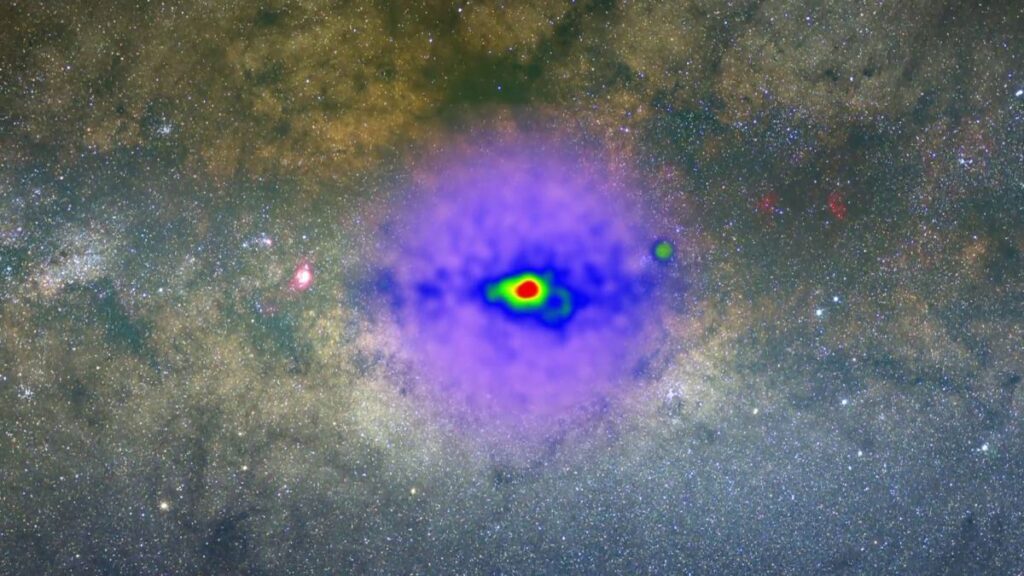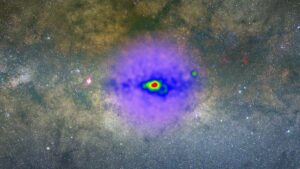
A recent study suggests that a peculiar gamma-ray glow detected at the heart of the Milky Way may represent dark matter particles annihilating each other. This discovery, which builds upon findings from 2009, points towards a significant connection between the mysterious glow and dark matter, although millisecond pulsars remain a competing hypothesis.
The gamma-ray glow, known as the Galactic Center GeV Excess (GCE), has intrigued astronomers since its initial observation using data from the Fermi Gamma-ray Space Telescope. Researchers have identified two primary sources responsible for this glow: dark matter and millisecond pulsars. Dark matter is an elusive substance believed to account for a substantial portion of the universe’s mass, while millisecond pulsars are rapidly spinning neutron stars that emit beams of radiation, including gamma rays.
According to astrophysicist Joseph Silk from Johns Hopkins University, “Dark matter dominates the Universe and holds galaxies together. It’s extremely consequential, and we’re desperately thinking of ideas as to how we could detect it.” He adds that the gamma rays observed from the center of the Milky Way could potentially serve as an initial clue to understanding dark matter.
Research Findings and Implications
The research led by cosmologist Moorits Mihkel Muru from the Leibniz Institute for Astrophysics Potsdam employed advanced simulations to explore the evolutionary history of the Milky Way. The team aimed to ascertain whether the GCE’s characteristics might definitively rule out dark matter annihilation as a potential source.
Their findings indicate that the dark matter halo surrounding the Milky Way is not perfectly spherical but slightly flattened due to the galaxy’s history of mergers with other galaxies. This shape could produce a gamma-ray glow resembling the boxy distribution observed in the GCE. The researchers concluded that both dark matter annihilation and millisecond pulsars could plausibly explain the GCE based on its morphology, spectrum, and intensity.
The study underscores a notable aspect of the GCE: some observations have revealed uneven speckling, which could be attributed to point sources like millisecond pulsars. In contrast, dark matter annihilation would result in a smoother glow. Although this study does not directly address the small-scale texture, it leaves room for the possibility that both sources of gamma radiation are simultaneously active in the galactic center.
Future Research Directions
The implications of this research are significant for the field of astrophysics. Upcoming observatories, such as the Cherenkov Telescope Array and the Southern Wide-field Gamma-ray Observatory, are expected to provide crucial data that may help distinguish between the two competing hypotheses.
Silk emphasizes the importance of forthcoming observations, stating, “It’s possible we will see the new data and confirm one theory over the other. Or maybe we’ll find nothing, in which case it’ll be an even greater mystery to resolve.”
The research findings have been published in the journal Physical Review Letters, contributing to the ongoing quest to understand the nature of dark matter and its role in the cosmos.







